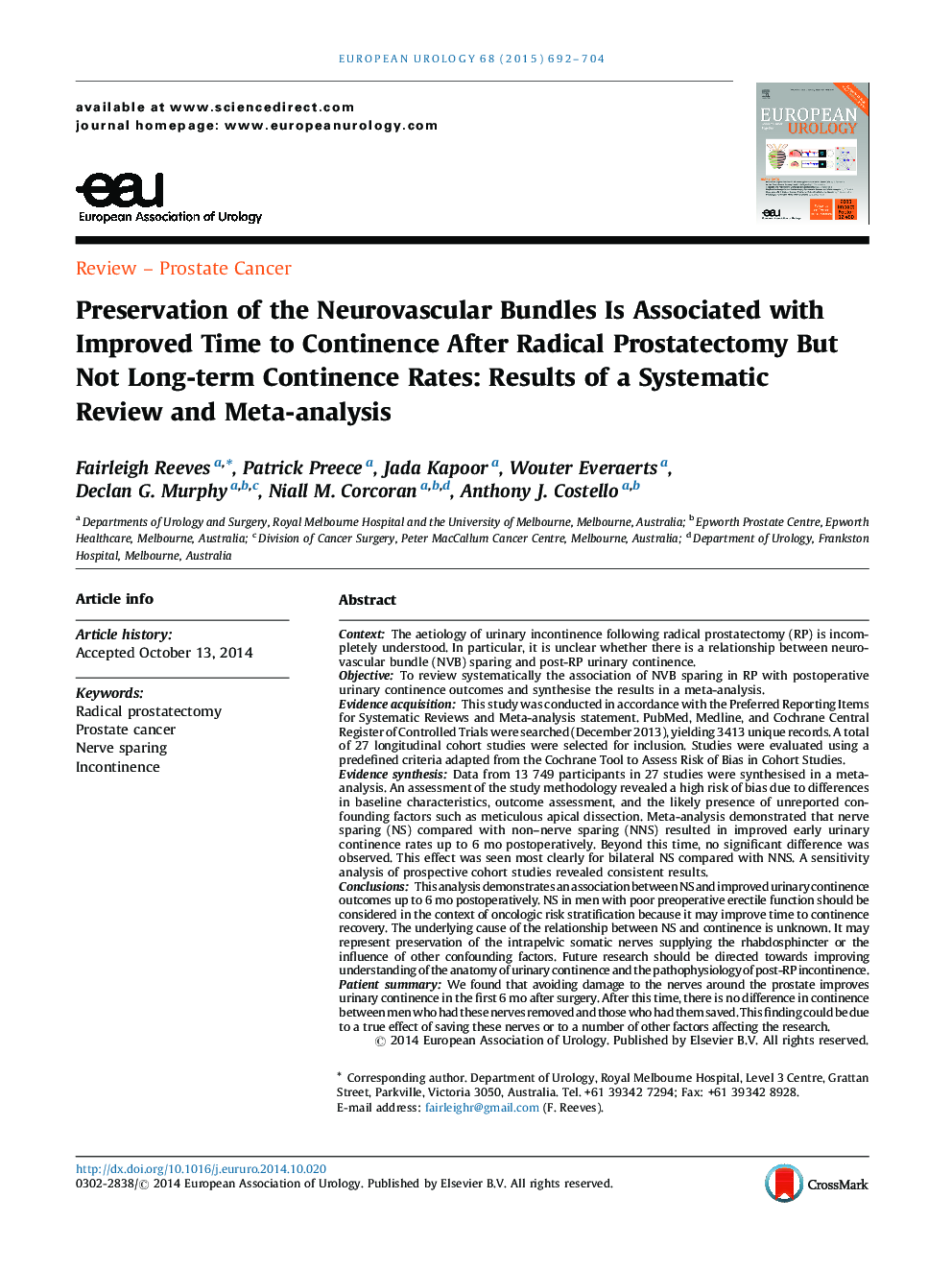| کد مقاله | کد نشریه | سال انتشار | مقاله انگلیسی | نسخه تمام متن |
|---|---|---|---|---|
| 6176244 | 1253046 | 2015 | 13 صفحه PDF | دانلود رایگان |
ContextThe aetiology of urinary incontinence following radical prostatectomy (RP) is incompletely understood. In particular, it is unclear whether there is a relationship between neurovascular bundle (NVB) sparing and post-RP urinary continence.ObjectiveTo review systematically the association of NVB sparing in RP with postoperative urinary continence outcomes and synthesise the results in a meta-analysis.Evidence acquisitionThis study was conducted in accordance with the Preferred Reporting Items for Systematic Reviews and Meta-analysis statement. PubMed, Medline, and Cochrane Central Register of Controlled Trials were searched (December 2013), yielding 3413 unique records. A total of 27 longitudinal cohort studies were selected for inclusion. Studies were evaluated using a predefined criteria adapted from the Cochrane Tool to Assess Risk of Bias in Cohort Studies.Evidence synthesisData from 13 749 participants in 27 studies were synthesised in a meta-analysis. An assessment of the study methodology revealed a high risk of bias due to differences in baseline characteristics, outcome assessment, and the likely presence of unreported confounding factors such as meticulous apical dissection. Meta-analysis demonstrated that nerve sparing (NS) compared with non-nerve sparing (NNS) resulted in improved early urinary continence rates up to 6 mo postoperatively. Beyond this time, no significant difference was observed. This effect was seen most clearly for bilateral NS compared with NNS. A sensitivity analysis of prospective cohort studies revealed consistent results.ConclusionsThis analysis demonstrates an association between NS and improved urinary continence outcomes up to 6 mo postoperatively. NS in men with poor preoperative erectile function should be considered in the context of oncologic risk stratification because it may improve time to continence recovery. The underlying cause of the relationship between NS and continence is unknown. It may represent preservation of the intrapelvic somatic nerves supplying the rhabdosphincter or the influence of other confounding factors. Future research should be directed towards improving understanding of the anatomy of urinary continence and the pathophysiology of post-RP incontinence.Patient summaryWe found that avoiding damage to the nerves around the prostate improves urinary continence in the first 6 mo after surgery. After this time, there is no difference in continence between men who had these nerves removed and those who had them saved. This finding could be due to a true effect of saving these nerves or to a number of other factors affecting the research.
Journal: European Urology - Volume 68, Issue 4, October 2015, Pages 692-704
